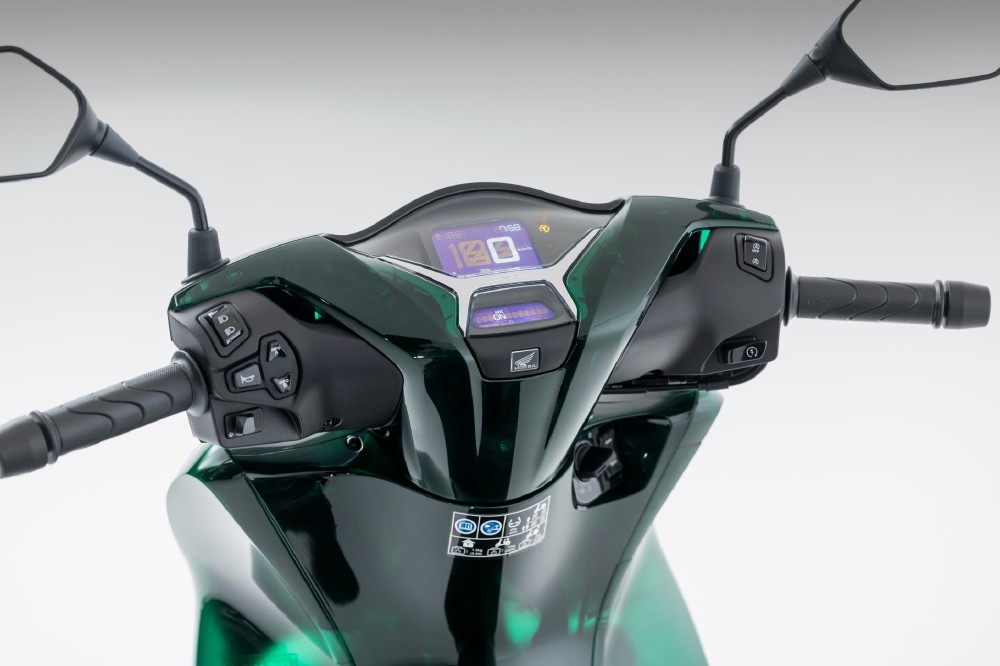Honda invited journalists, influencers, and personalities, to Milan Italy to showcase to the world the first part of its evolving approach to more sustainable product design. The European premiere of its latest electrified urban vehicle concepts – the SUSTAINA-C Concept car and Pocket Concept motorcycle – at Milan Design Week.
Why Milan – centre and world leading destination of innovation and design, in the fashion world, think Donatella Versace, Giorgio Armani, in the art world think Leonardo Da Vinci, and in the world of motoring think Ferrari. So where better to launch your forward thinking vision for the future of Honda.

The SUSTAINA-C Concept
This is the first step in Honda’s vision for the future as it demonstrates how society can be free from the constraints of finite resources and become fully sustainable.
Take the panels of the SUSTAINA -C, these are manufactured from end of life recycled acrylic resin from second-hand taillights and turned into exterior panels that don’t require painting. This allows Honda to create a unique, unpainted finish that wouldn't be possible with traditional materials. This use of alternative materials will reduce emissions during production by around 45% as a result, with further reductions made by removing energy and materials used for the painting.
The model on display at Milan featured this concept, having black and white marble effect, achieved by mixing colours with different melting points into the panels as they are moulded – leaving a marbling effect behind as the material settled in the mould.
Other advantages not only are the vehicle panels far more resilient as they are crack resistant and able to return to their original shape following light collisions. The resin is also weather resistant with minimal degradation from ultra violet light in sunlight.

At the rear, the acrylic resin’s transparency means the SUSTAINA-C Concept’s tailgate to be formed out of a single panel that can act like a smartphone screen. A mini-LED display has been designed to communicate with other road users via simple text or imagery, thereby offering a potential new dimension for the exterior design of future vehicles.
Working in partnership with Mitsubishi Chemical, to reclaim the acrylic resin to be used for the SUSTAINA-C Concept from the second-hand taillights from end-of-life vehicles demonstrates a new approach to future resource extraction and circulation by working with in tandem with other companies and their shared strengths.

The SUSTAINA-C is paired with the Pocket Concept compact motorcycle that can be stored away in the boot to be used further mobility.
Kento Ishii, SUSTAINA-C spokesperson, said: “The SUSTAINA-C is proof of the possibilities available when we think more sustainably. This is not only true of the panels themselves, but also those elements that are not visible from the outside. Whether that is sourcing more environmentally friendly steel for the chassis, or recycled materials for the interior, there are so many ways in which we can start to make a difference in the way we manufacture vehicles.
Planet - Sustainability - Society
Their aim is be to become truly and fully sustainable, using renewable energy, by using materials that can be re-used at the end of life over and over again while collaborating with others that take the same approach to manufacture. While at all times producing products and services that expand people’s dreams and potential.
Honda will drive and develop new strengths creating a clean safe resilient society which people will want to be involved in. This will centre the principles of Mono-zukuri, the art of making things, and Koto-zukuri – which is creating new experiences through brand storytelling about the art of making things.
The target is to further expand the product range of products and services that will put people at its core. The ultimate aim is to become the leader in the areas of the environment and safety, we will invest more resources in these areas. And we will strive to become a company that leads the effort to realize a carbon-free and collision-free society.
Current sustainability advances

Honda is already finding ways to reduce the CO2 emissions of its product manufacturing here in Europe, as demonstrated by the ‘Vetro’ version of its immensely popular SH125i scooter produced at Honda Italia Industriale. The ‘Vetro’, Italian for glass, is a special edition model that features distinctive semi-transparent unpainted green fairing panels. The processes around the use of these panels at the Atessa factory reduce CO2 emissions by 9.5 per cent when compared with the manufacturing processes for standard painted fairings.
Developed in partnership with Honda Motor in Japan, the new material is a substitute for the ABS plastic traditionally used for non-structural parts and components, helping to form a sleek, unified body style and premium presence.
The SH125i Vetro’s elegant looks are matched by its effortless practicality and efficiency, as the first Atessa-built Honda model to meet new EURO5+ emissions targets – a legal requirement for all new model types by the end of 2024.
Marcello Vinciguerra, Managing Director, Honda Italia Industriale, said: “The SH125i Vetro demonstrates how small changes in the materials used can have a tangible environmental benefit.
This will be based on mobility, robotics, on AI, and energy solutions in order to provide people with the freedom of mobility and the joy of making their lives better.
It is clear from what was proposed by the speakers at the conference that Honda have a clear and forward thinking vision for the future centred on the three principals of Society, the planet and sustainability. This will be achieved by working with other like minded producers and combining each others strengths to achieve their goals on zero waste, sustainable energy, and giving people safe mobility. High targets but if achieved they will be good for all.
Learn more about Honda Motors click here
Honda Motor Europe’s sustainability goals click here
The SH125i Vetro click here

